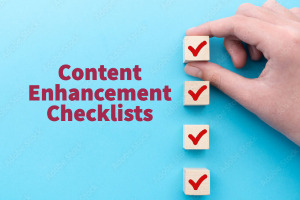Why Checklists?
One powerful tool to assist both SIM Professional Developers and teachers implementing SIM are instructional checklists. In Checklist Manifesto (2010), Atul Gwande explains that one purpose of checklists overall is to “remind us of the minimum necessary steps and make them explicit. They not only offer the possibility of verification but also instill a kind of discipline of higher performance” (p. 36).
On an instructional checklist, an intervention is broken down into steps that are visible and specific. For research purposes, instructional checklists with rating scales (e.g., present and correct, present and needs improvement, or not present) are developed and used to evaluate levels of fidelity to draw connections between the effectiveness of an intervention and student outcomes. However, instructional checklists used for coaching purposes do not need rating scales as their purpose is to stimulate dialogue between a teacher and coach, and to assist with finding the right balance between fidelity and appropriate adaptations, considering a teacher’s context and the unique learners he/she serves. In other words, the power of the checklist is in the conversation that takes place before and after its use. More specifically, checklists and their use are non-evaluative.
Before using a checklist, it is helpful to explain its purposes (e.g., improved clarity, reduce cognitive load while implementing, and non-evaluative). When an item/behavior on a checklist is not checked, this may be intentional as the teacher had information or input that lead him/her to skip or adapt a certain component and/or this may be a point for conversation between coach and teacher related to future implementation of the given SIM intervention. SIM fidelity checklists were developed originally by CRL researchers/SIM intervention authors. Over the years, SIM Professional Developers have modified them and shared them back with the CRL.
Posted here, you may find both the original research version of the checklists and a new version is intended for coaching purposes. In sum, “checklists increase the effectiveness of explanations” (Knight, Hoffman, Harris, & Thomas, 2019, p. 90).


